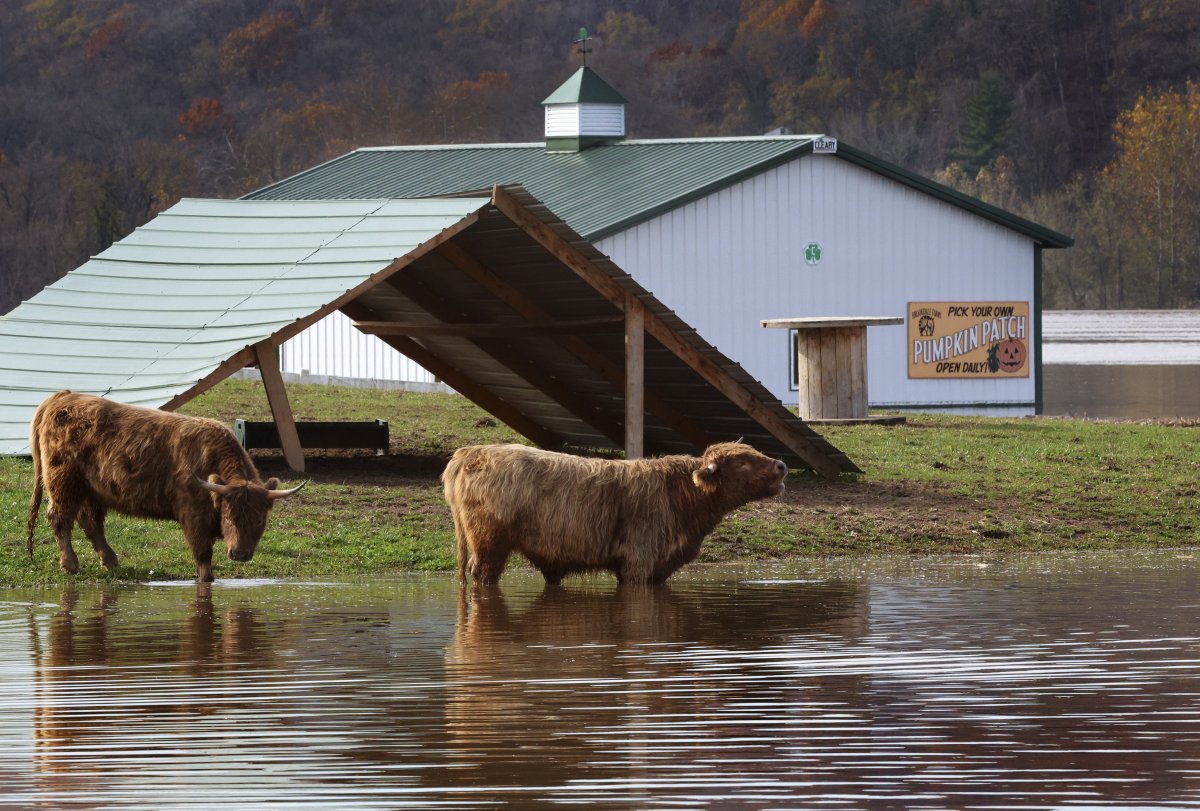
July has brought extreme heat and sudden, deadly downpours across large parts of the United States, with more severe weather expected in the Central Plains, Midwest, and Southeast in the coming days, according to the National Weather Service (NWS).
Why It Matters
Extreme heat is the deadliest weather hazard in the country. Between 2004 and 2018, the National Center for Health Statistics recorded an average of 702 heat-related deaths per year, and according to the Environmental Protection Agency (EPA), more than 14,000 Americans have died from heat exposure since 1979.
Older adults, young children and people with chronic illnesses face the greatest risk from extreme heat. Prolonged heat waves can also strain local power grids as demand for air conditioning spikes.
Flooding is the second deadliest weather hazard nationwide, with most fatalities occurring when vehicles are swept away by rising waters. On July 4, deadly Texas flash floods have killed at least 135 with hundreds still missing.
What to Know
The NWS has issued multiple heat advisories, excessive-heat warnings and flash-flood alerts across the Central U.S. and parts of the Southeast coastline, many of which are in place until mid-week.
Extreme Heat Warnings
Most of Missouri is under excessive heat warnings, with the NWS in St. Louis forecasting heat index values nearing 110 degrees Fahrenheit for several consecutive days, creating “dangerously hot” conditions. Heat index values reflect how hot it feels when both temperature and humidity are factored in.
Large swaths of Kansas are also under extreme heat warnings with forecasts up to 107 degrees. The alert encourages people to “drink plenty of fluids, stay in an air-conditioned room, stay out of the sun,” and to “not leave young children and pets in unattended vehicles,” noting that “car interiors will reach lethal temperatures in a matter of minutes.”
The warning also stated that “heat stroke is an emergency” and encouraged those who are feeling “overcome by heat” to be moved to a shaded, cool location and call 911.
Parts of Tennessee, Arkansas, and Kentucky are also under extreme heat warnings. Most counties along the Southeastern seaboard from North Carolina to Florida are under heat advisories as of Saturday.
Flash Flooding Warnings
The NWS noted Saturday morning that flooding has already occurred in parts of Illinois, Indiana, and Kentucky, with a flash flood warning still in effect and warning of “life threatening flash flooding of creeks and streams, urban areas, highways, streets and underpasses.”
In Missouri, the NWS also flagged “very high rainfall rates” of 2 to 4 inches in a short window, warning that already saturated soils from recent rains “will lead to an increased risk for flash flooding.”
Portions of Indiana and Kansas are also under flash flood warnings.
The NWS is urging drivers to avoid flooded roads, warning: “Turn around, don’t drown.” The agency notes that most flood-related deaths occur in vehicles.

Robert Cohen/St. Louis Post-Dispatch via AP
Forecasts
In addition to issuing heat advisories and warnings, on Friday the NWS shared an interactive timelapse map on social media showing evolving heat threats across the U.S. The footage illustrates expanding impacted zones through Sunday, with intense heat shifting northward into the Northeast by Wednesday and Thursday.
Parts of a handful of states including Georgia, Florida, Tennessee, Missouri, South Carolina, North Carolina, Arkansas, and Missouri are forecast to experience extreme heat in the coming days.
Dangerous heat in the southeast on Saturday will begin to build into the mid-Mississippi Valley and Midwest by early in the upcoming workweek. Major and Extreme HeatRisk are designated for conditions not only to vulnerable populations but also anyone without effective cooling… pic.twitter.com/ARtrCglnNk
— National Weather Service (@NWS) July 18, 2025
In a Friday update, the NWS Weather Prediction Center noted that a “stretch of unusually hot and humid weather” starting in the Southeast will expand to the Mid-South and Midwest in the coming days, noting that “the heat will reach dangerous levels and is likely to persist for a long time.”
The agency also noted “little to no overnight relief and high humidity levels.”
Another forecast map from the NWS concerned with flash flooding shows much of the Midwest and parts of the Mid-Atlantic under a slight risk—less than a 15 percent chance in the coming days. Portions of Virginia and West Virginia face a moderate risk, with probabilities exceeding 40 percent.
The next few days will bring with them various areas where there will be a threat of flash flooding due to heavy rain. https://t.co/VyWINDkBnn can give you your latest, 7-day forecast.
Remember: if you approach a water-covered roadway, Turn Around, Don’t Drown. You may have… pic.twitter.com/DRe4ozVoup
— National Weather Service (@NWS) July 18, 2025
What People Are Saying
NWS Memphis said in a Saturday X post: “Dangerous heat and humidity will continue today across much of the Mid-South. Be mindful of heat-related impacts if you have outdoor plans today. This heat wave continue through next week.”
NWS St. Louis wrote in an X post on Saturday: “Temperatures and humidity will start to increase today, resulting in dangerous outdoor conditions during the day. These conditions will stick around across the region through most of next week. Take precautions to keep yourself and your neighbors safe.”
Representative Maxwell Frost, a Florida Democrat, wrote in an X post on Friday: “Central Florida — we’re facing a dangerous heat advisory this weekend! Use our Extreme Heat Resource Guide to stay safe, stay cool, and know where to go if you need help: RepFrost.us/heat”
The United Nations Environment Programme (UNEP) said in an X post on July 10: “A new UNEP report highlights that heat waves are becoming increasingly common, with heat-related deaths among adults aged 65 and older rising by 85% since the 1990s. The report also warns that melting glaciers could reawaken ancient pathogens, while floods may release dangerous chemicals. It recommends making cities pollution-free, resilient, and accessible, with expansive vegetation.”
What Happens Next?
Local and state officials are also warning residents about the heat risks, issuing alerts, and providing information on the locations of various cooling centers.
Many of the warnings remain in effect through midweek, as dangerously high temperatures are expected to persist through Thursday in some places.




